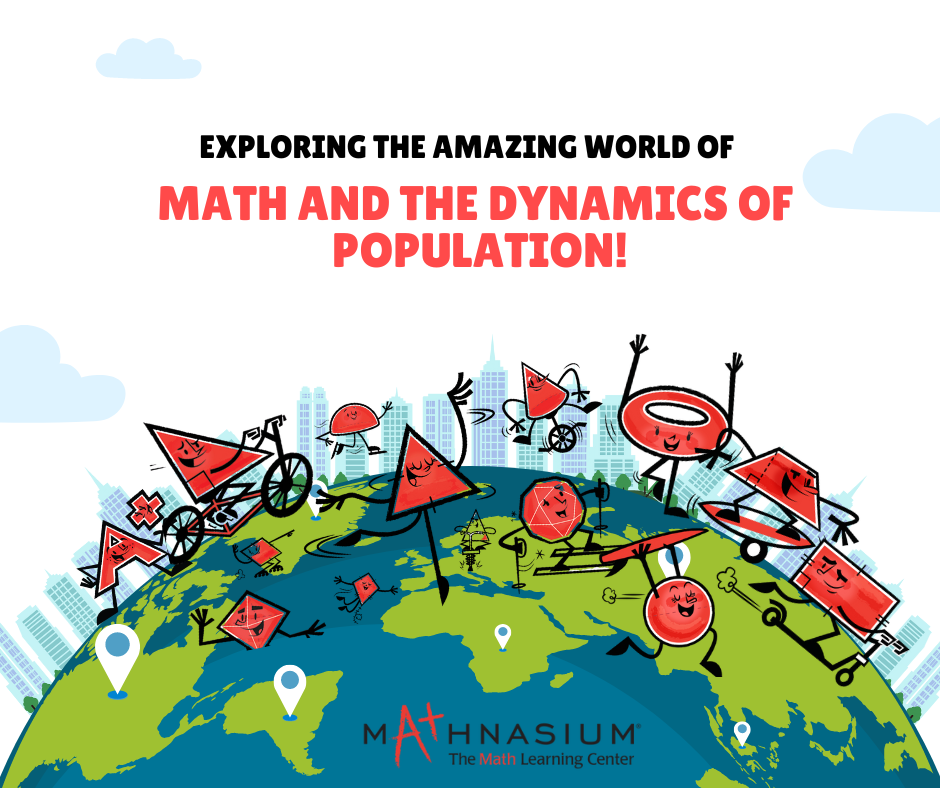Hello, young adventurers! Today, we are embarking on an exciting journey into the fascinating realms of math and the dynamics of population. Don't worry; it won't be boring at all! We'll discover how these two important topics are closely connected and how they play a crucial role in understanding our world.
Let's start with math, shall we? As you know, math is like a magical language that helps us solve problems, count things, and understand the world around us. It's not just about numbers; it's a way of thinking and reasoning logically. Mathematics is everywhere, from nature's patterns to the technology we use every day.
One of the fantastic things about math is that it allows us to explore patterns. Imagine you have a basket of delicious apples. How can we count them? Well, we use numbers of course! When we add one apple at a time, we can count how many apples we have. Naturally, this is called addition! Similarly, if we take away some apples, it's subtraction! If we owned an apple orchard, we would use counting methods over time to calculate averages of total apples grown each season and we would use subtraction to calculate things like how many apples need to be removed for a variety of reasons.
Now, let's talk about the dynamics of the population. It's all about understanding how the number of people in a particular place changes over time. Like counting apples, we can use math to understand and predict population growth or decline.
Imagine a town with a few families. As children are born, the population increases, just like when we add apples to the basket. But as people move away or pass on, the population decreases, just like when we remove apples from the basket. It's a dynamic process that math helps us study and make sense of!
One of the essential tools in understanding population dynamics is a graph. Graphs show us how things change over time. Imagine plotting the number of people in the town on a graph with time on the horizontal axis and the population on the vertical axis. The graph might rise when babies are born and fall when people move away. By studying these graphs, we can make important decisions, like planning for schools, hospitals, and other community needs.
But wait, there's more! Math also helps us predict the future! Using advanced math, we can make predictions about how a population will grow in the coming years. Scientists and policymakers use these predictions to plan for the future and ensure everyone has what they need.
Now, let's combine our knowledge of math and population dynamics to explore some exciting real-world examples. Have you ever wondered why some cities multiply, while others stay small? It's all about population dynamics!
In big cities, lots of people move in from different places seeking jobs and opportunities. This leads to a rapid increase in population, just like adding more apples to the basket. On the other hand, in some small towns, younger people move away to larger cities for better education or work, causing the population to decline, similar to removing apples from the basket.
Understanding population dynamics helps us plan for a better future. By knowing how many people might live in an area in the next few years, we can build better schools, hospitals, and homes to accommodate everyone.
Math and the dynamics of the population are incredible tools that help us make sense of our world. As you continue your journey through the magical world of math, remember to keep an eye out for the connections with real-life situations like population dynamics.
Happy learning, and may your curiosity lead you to new and exciting discoveries! The world is full of mysteries waiting to be unraveled through the power of math and a curious mind!











